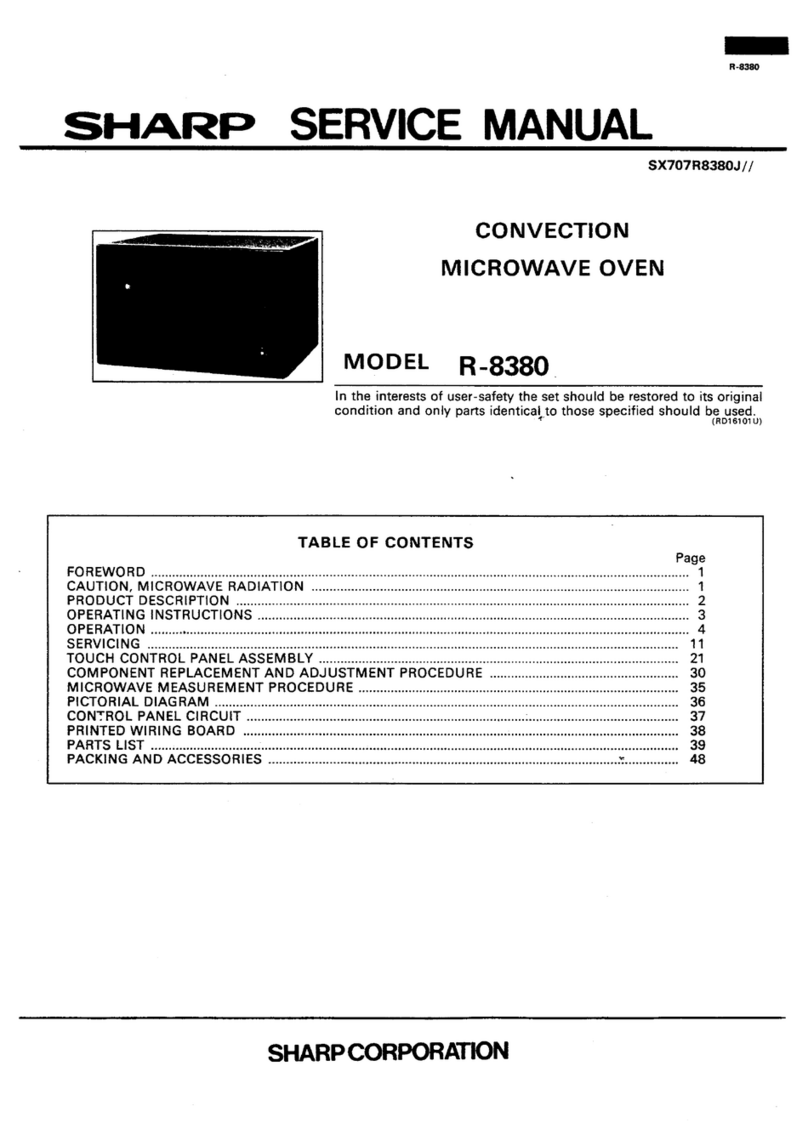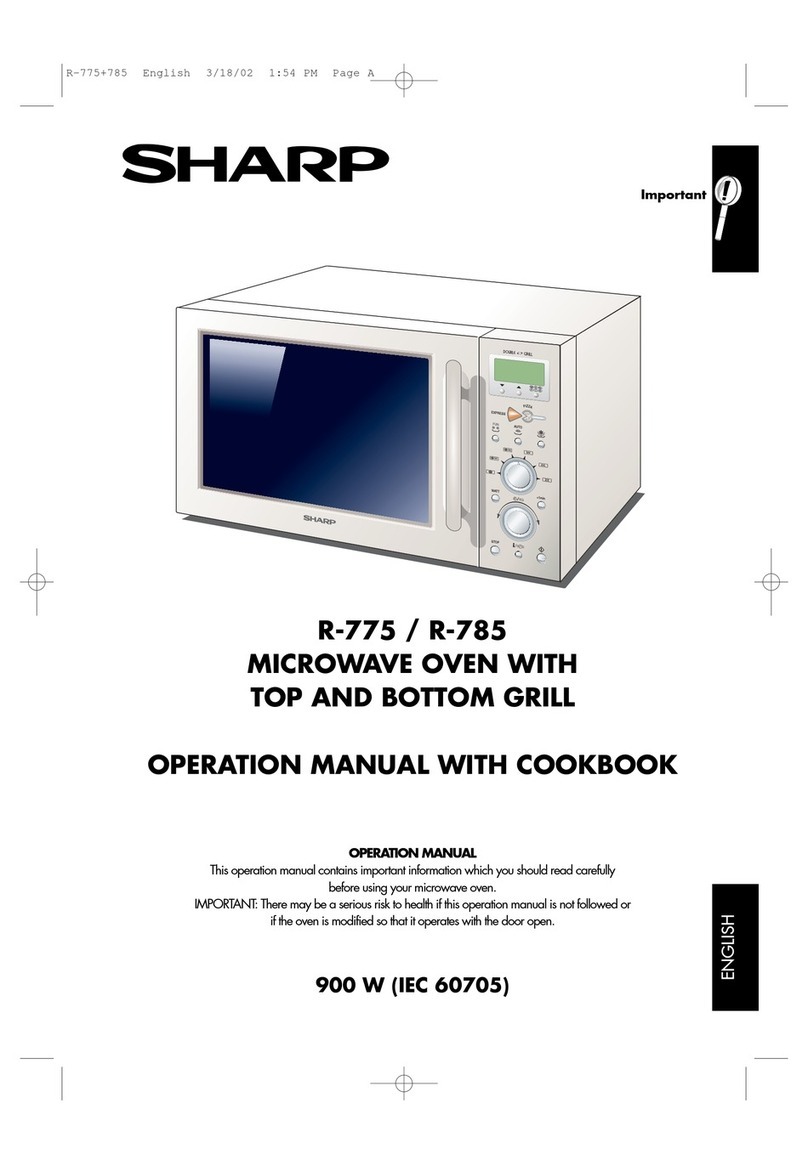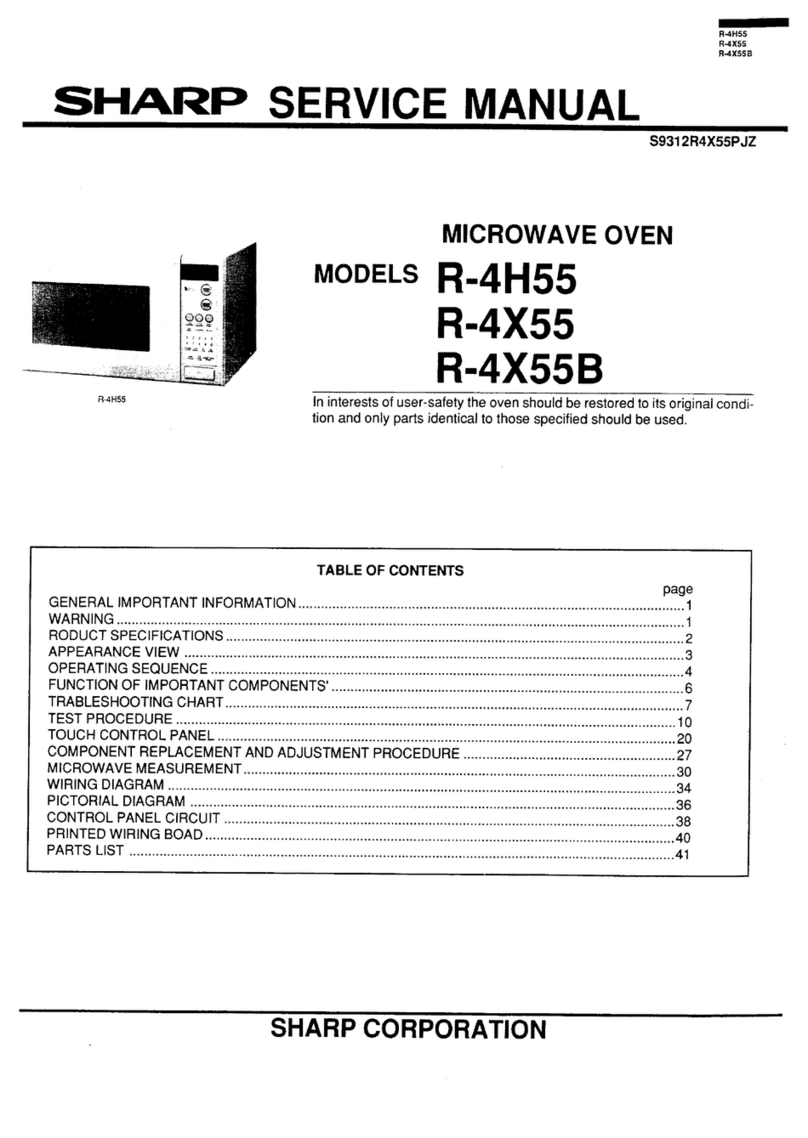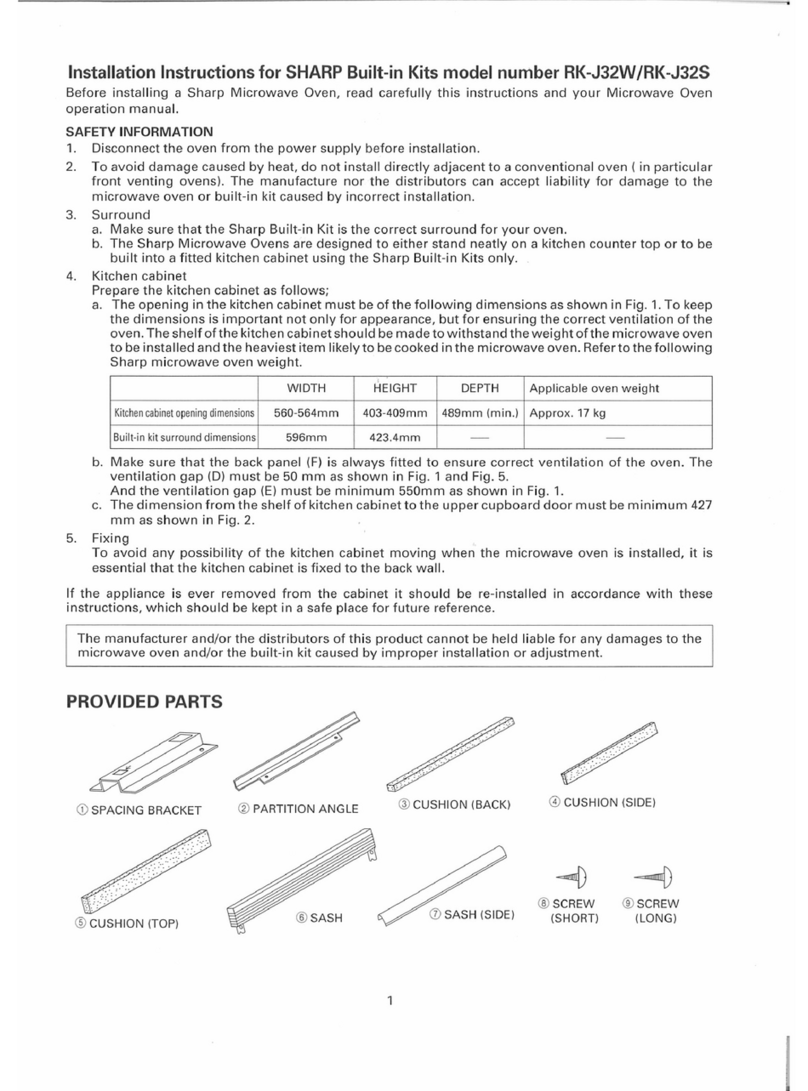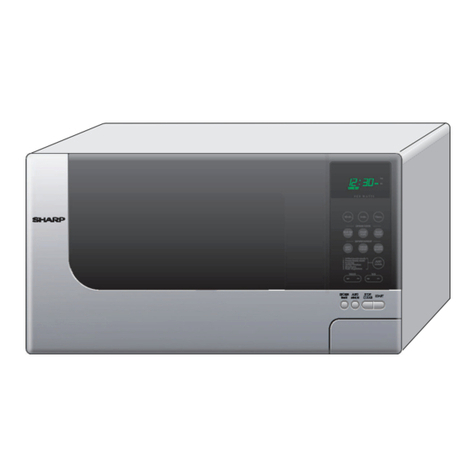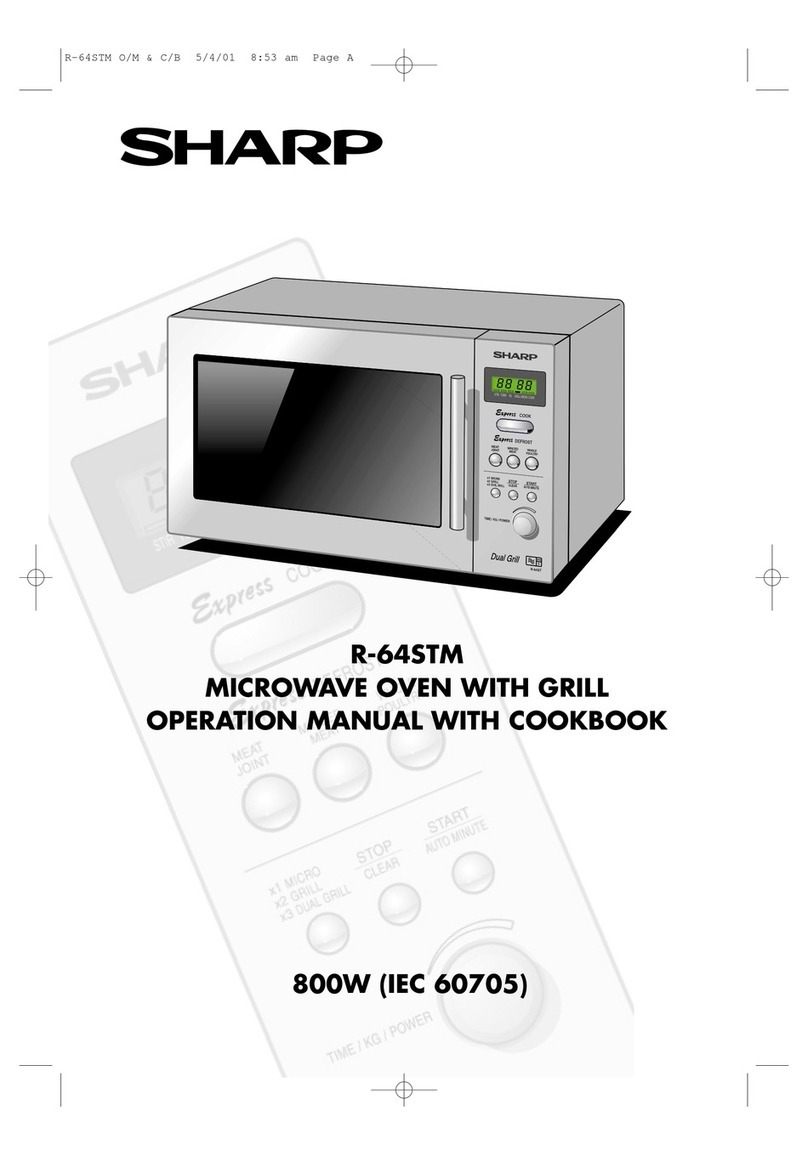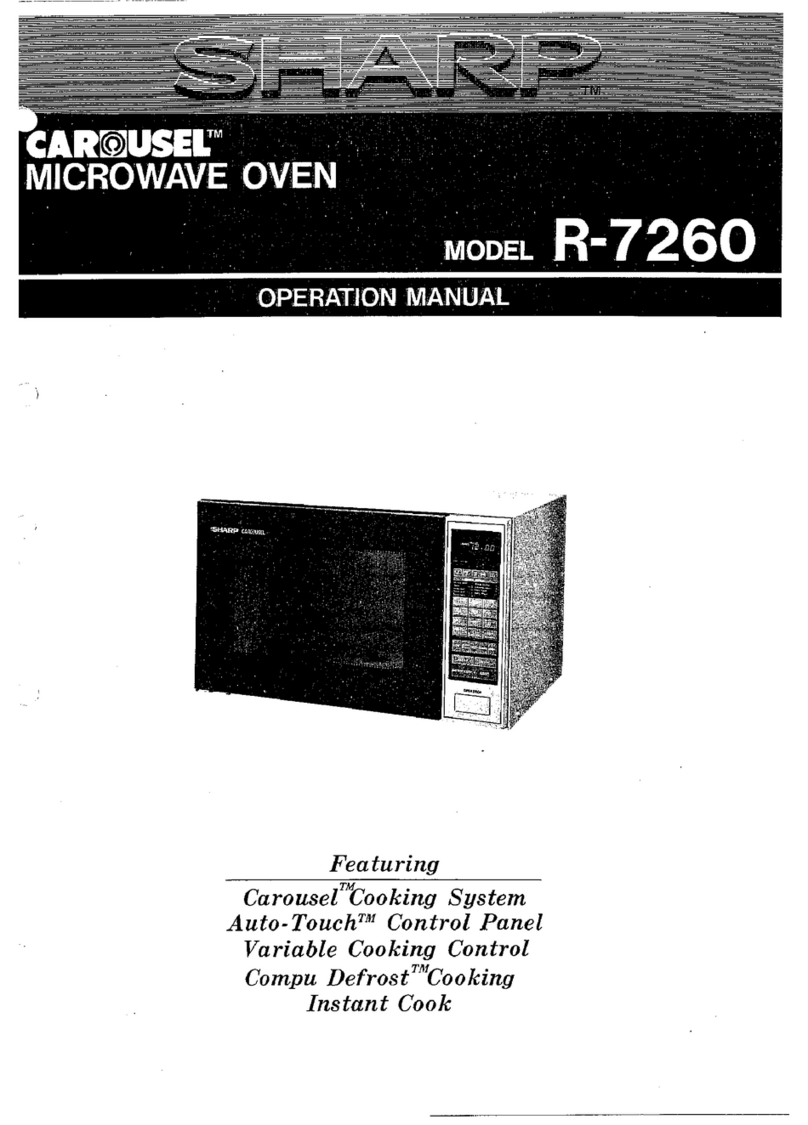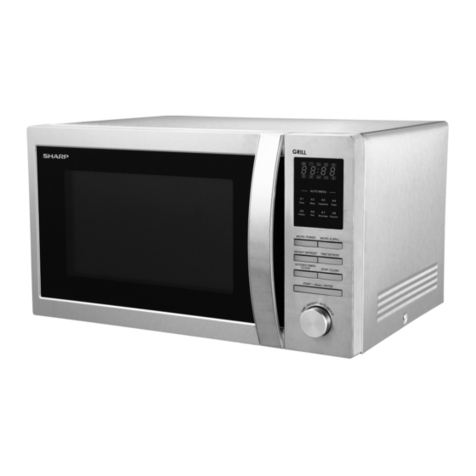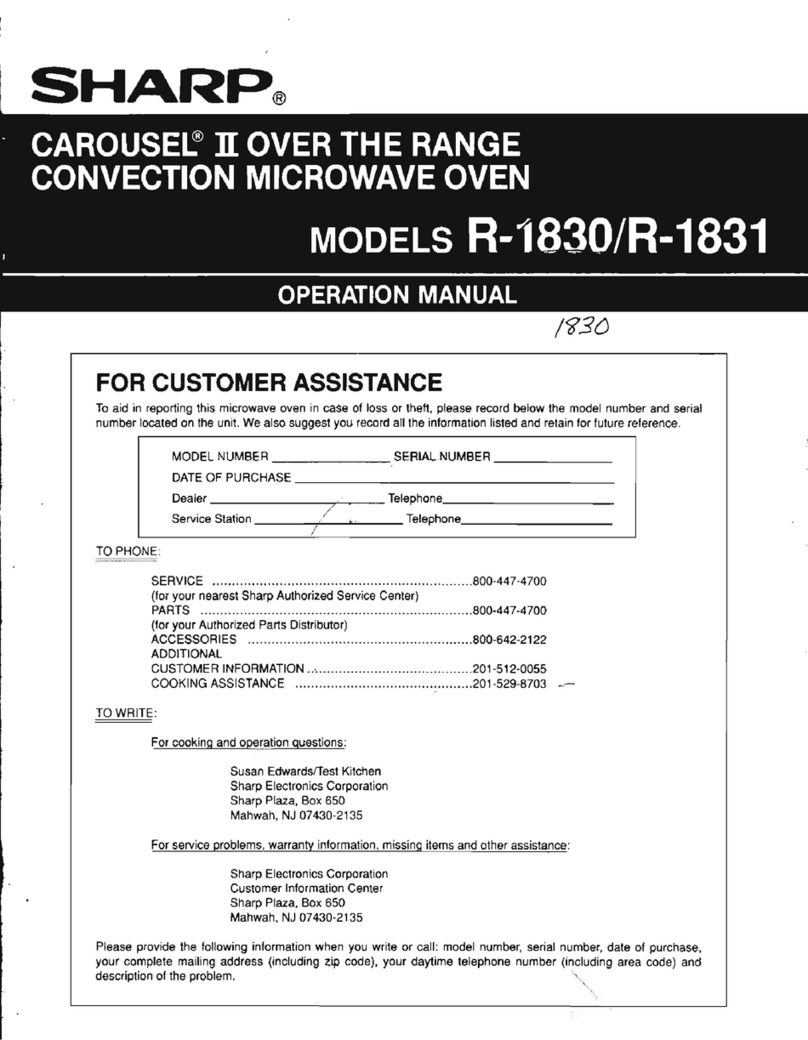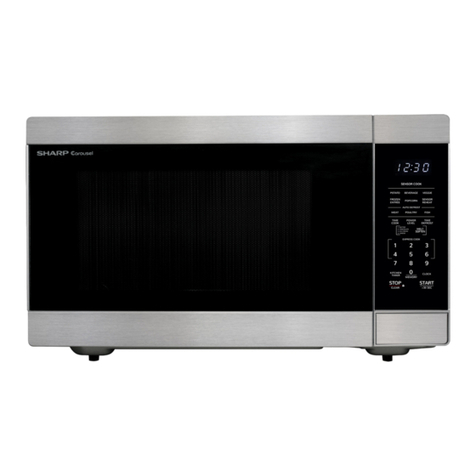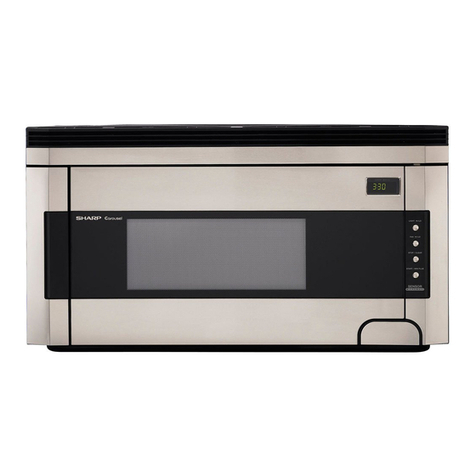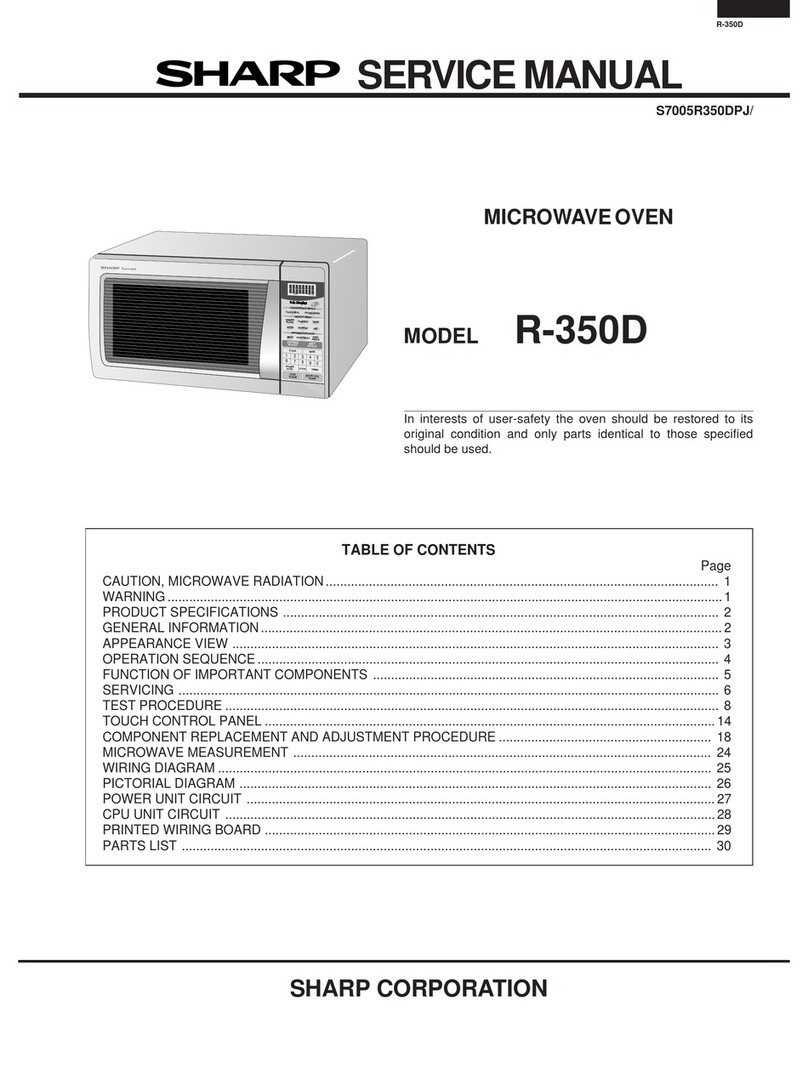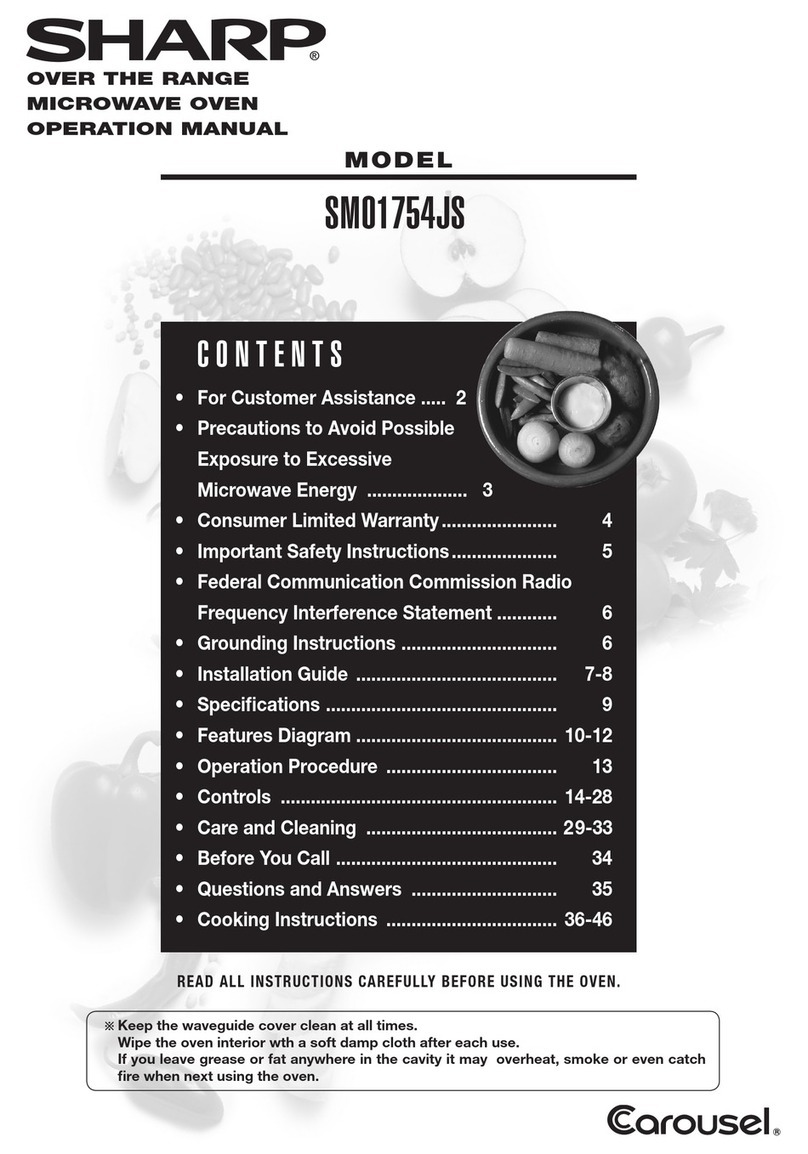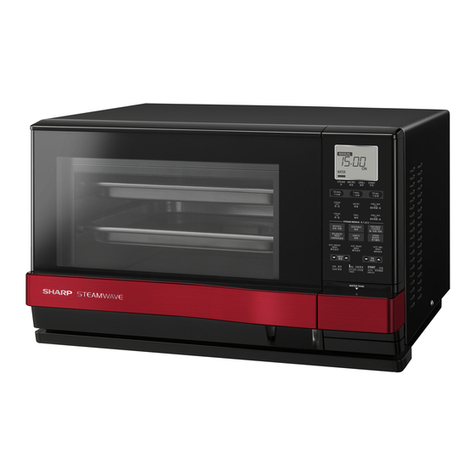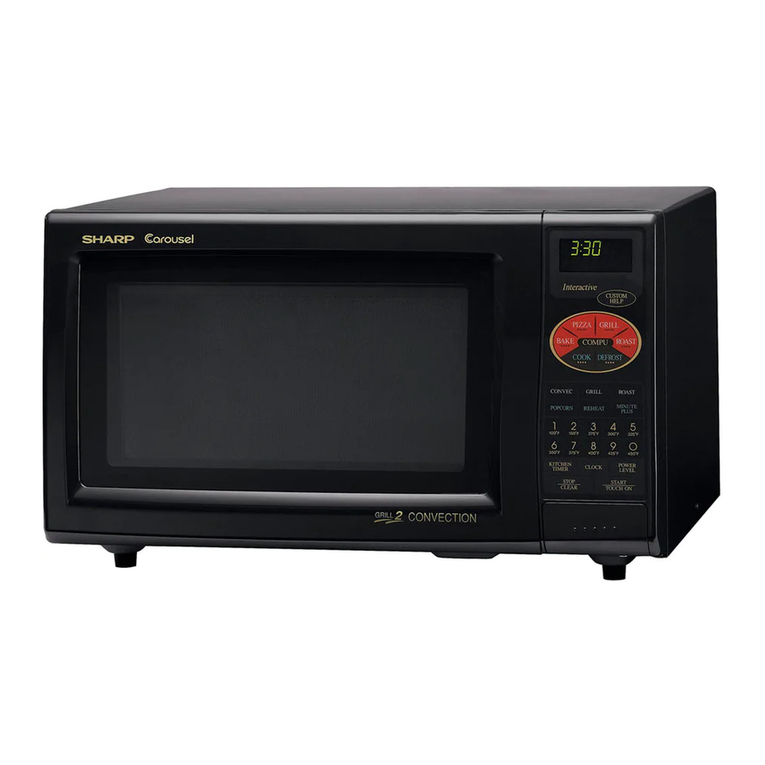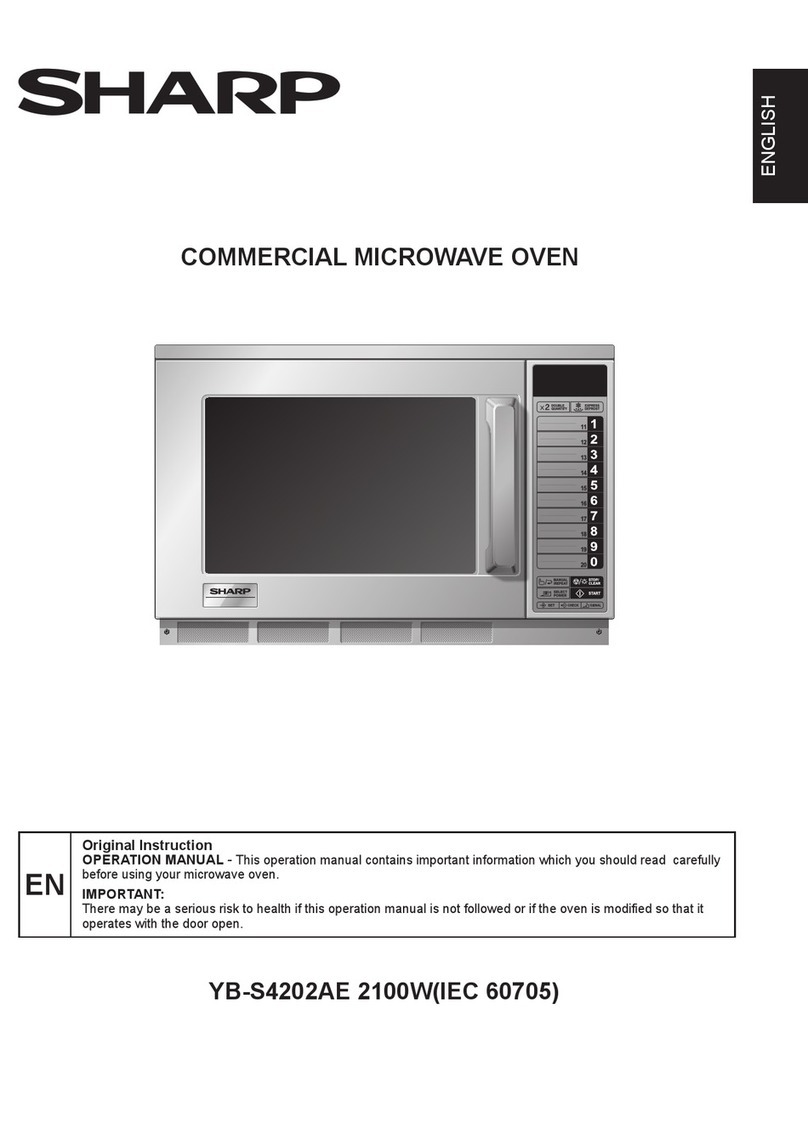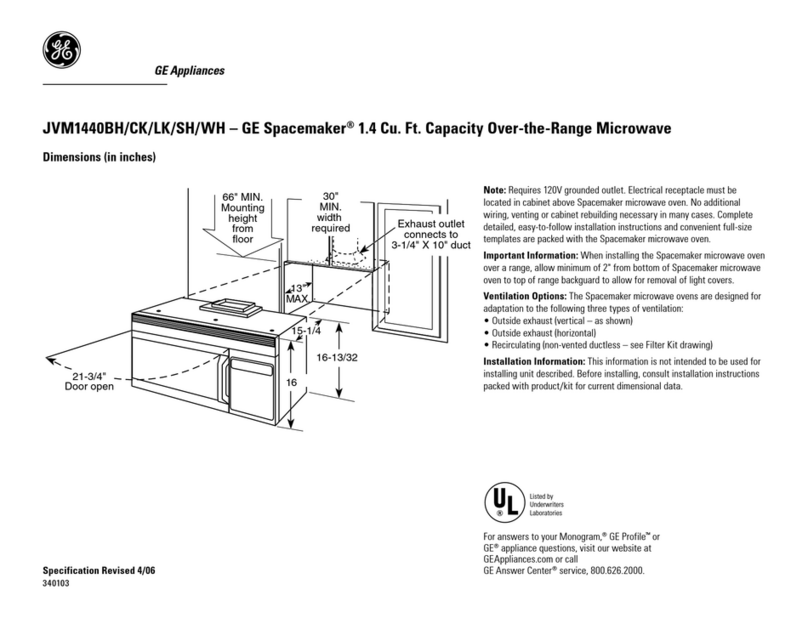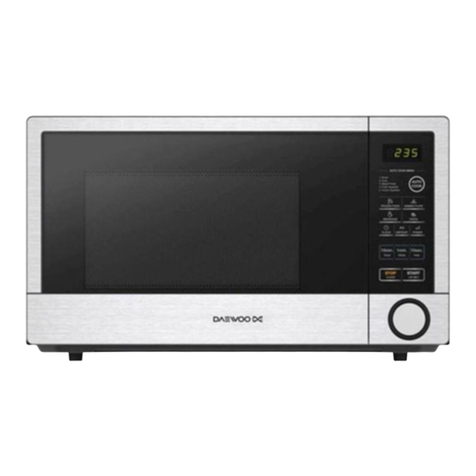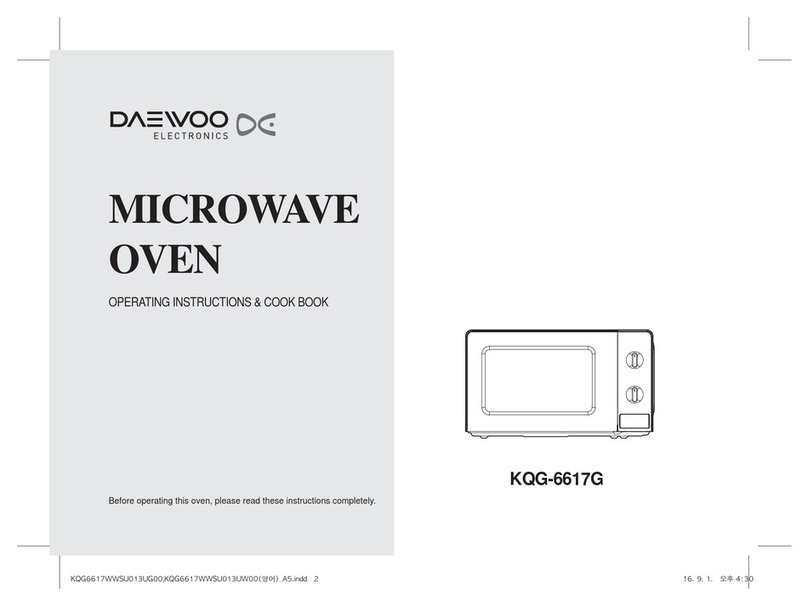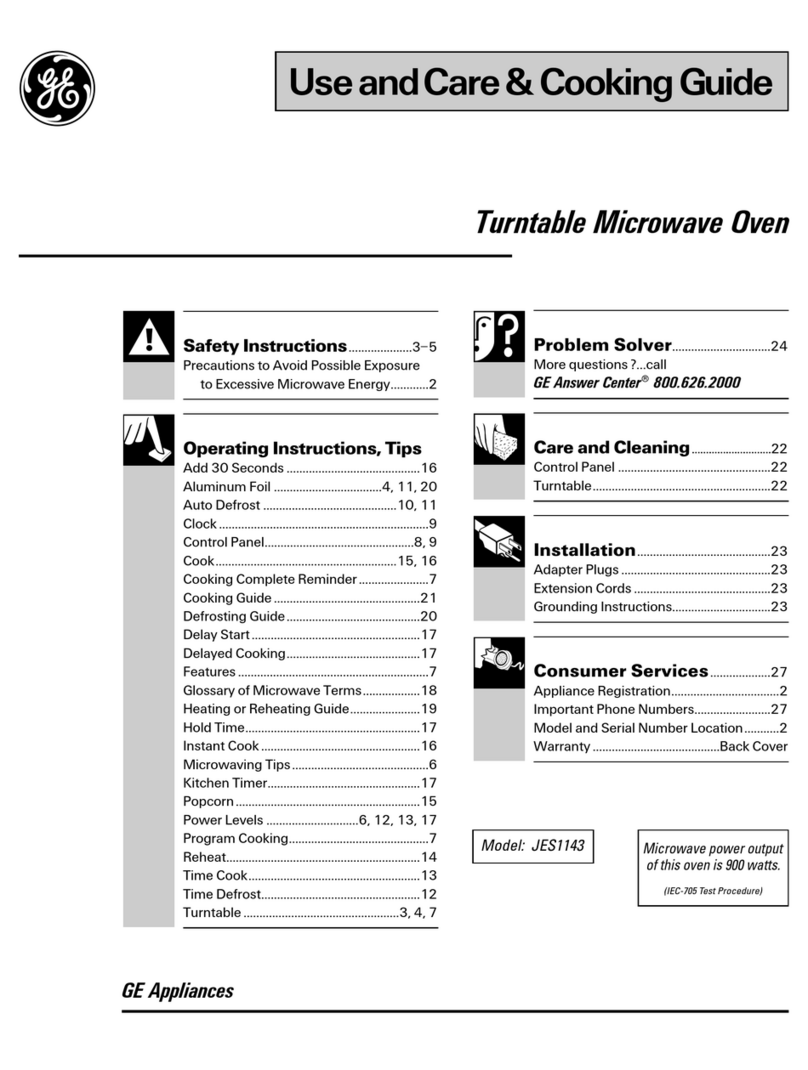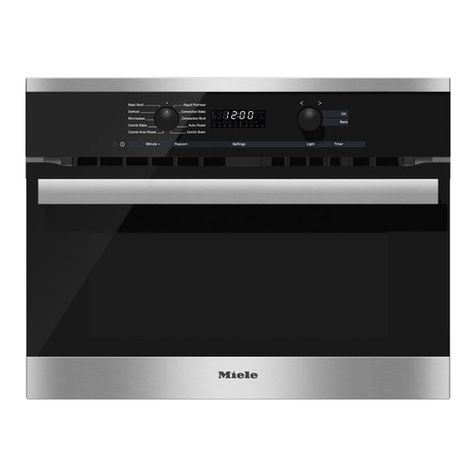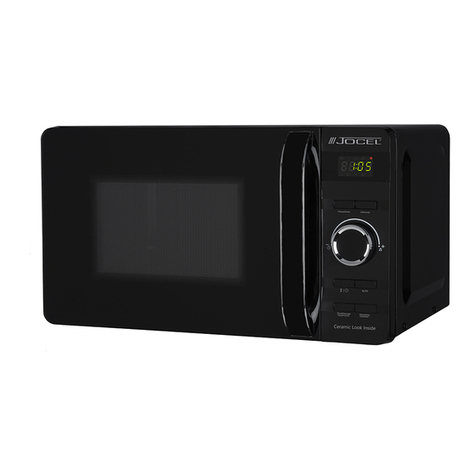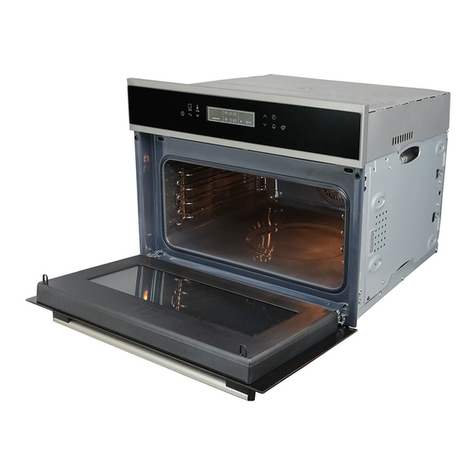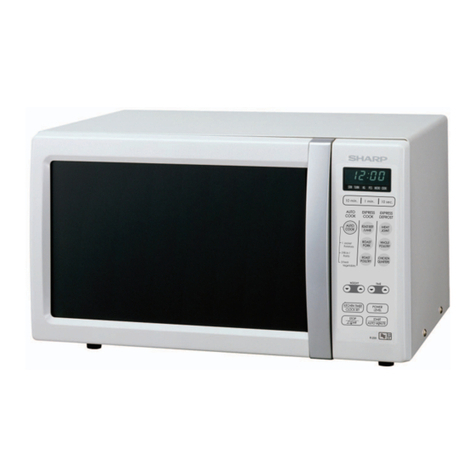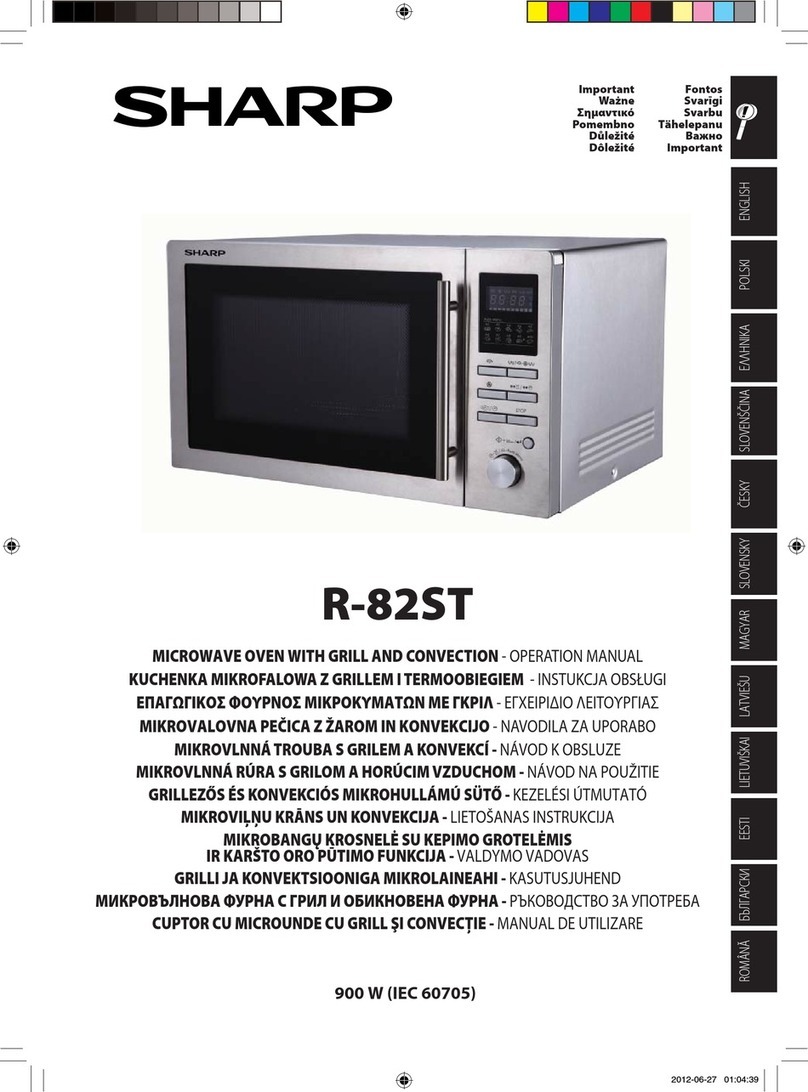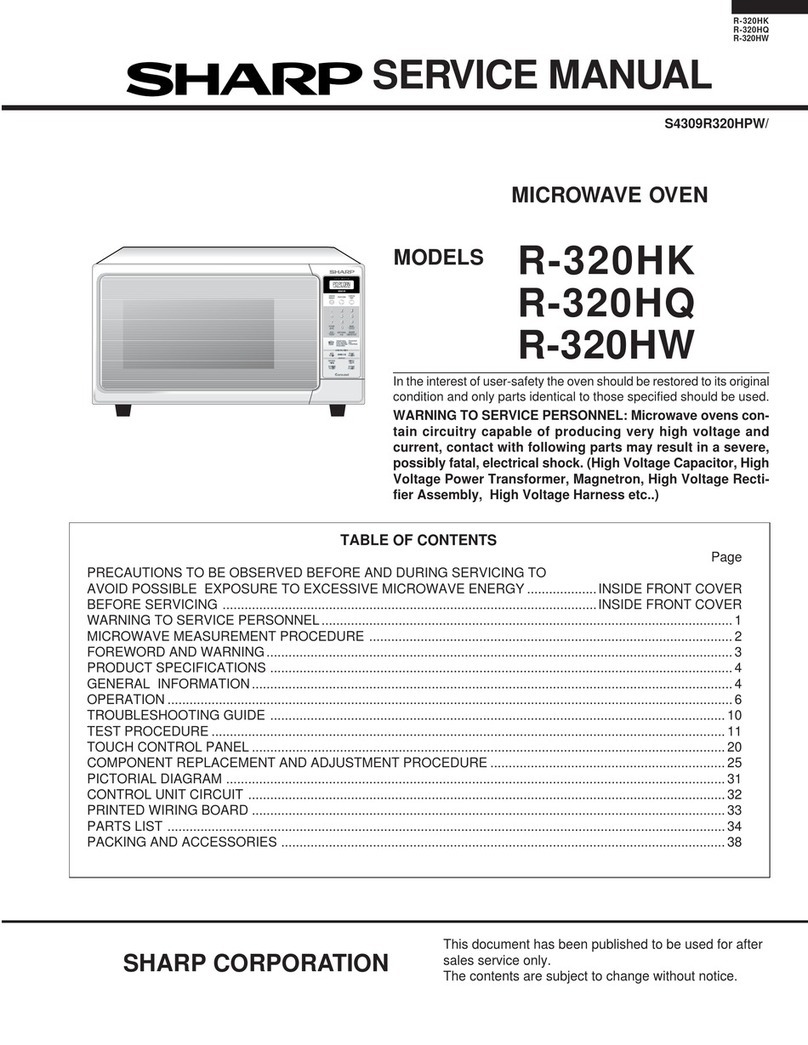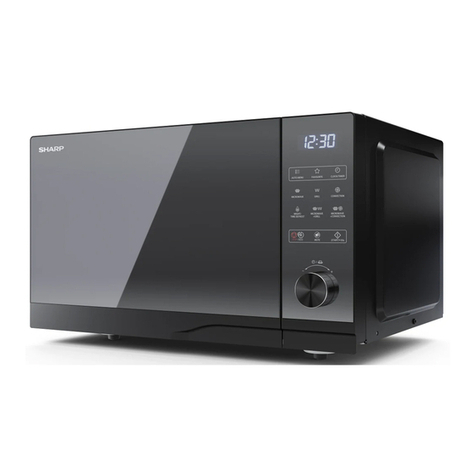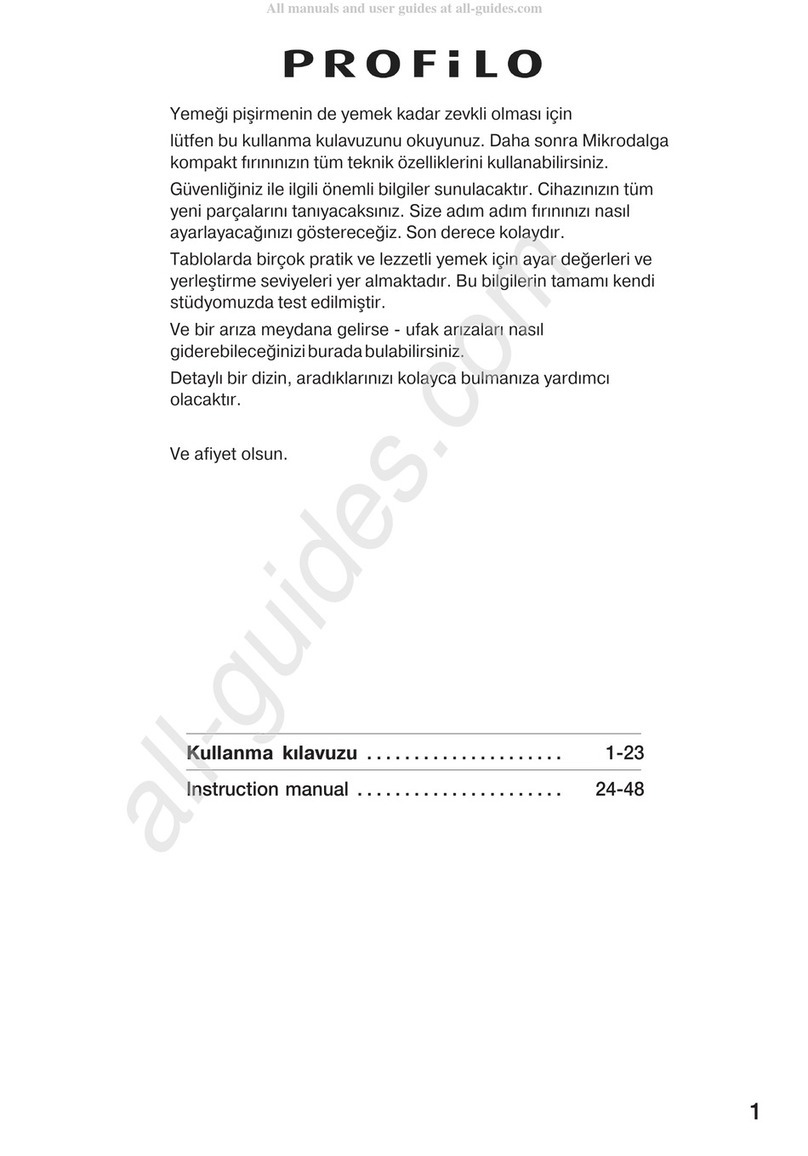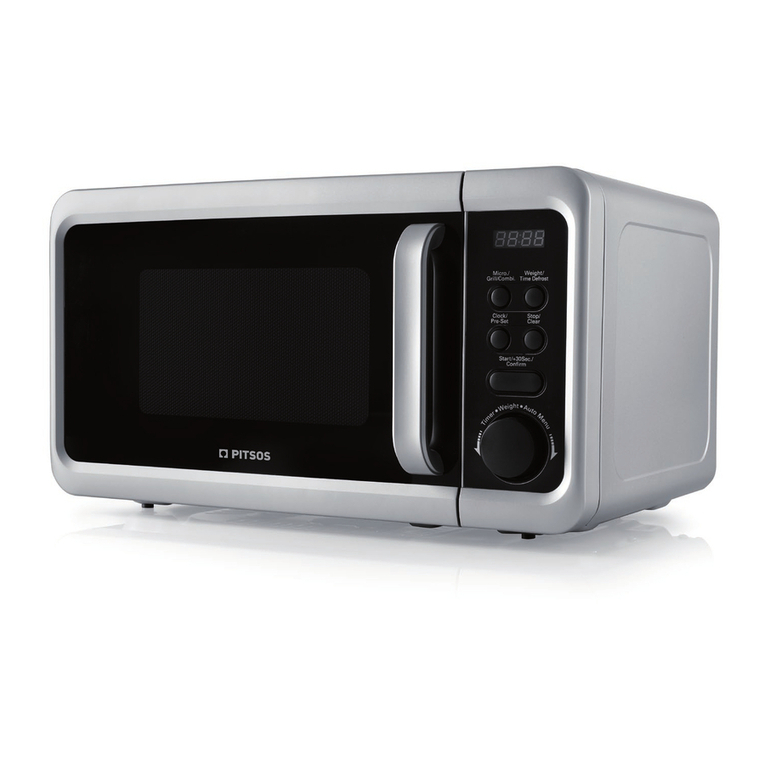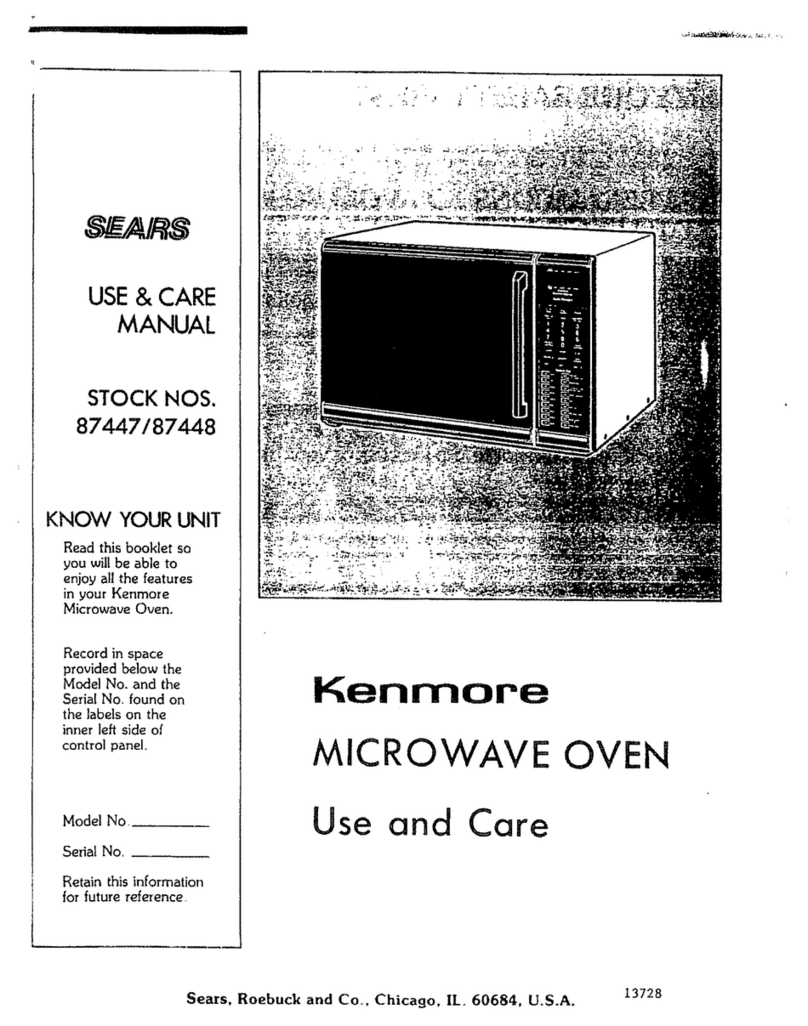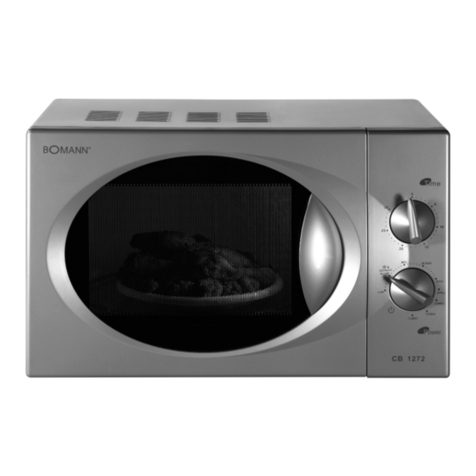
R-244M - 5
OPERATING SEQUENCE
1. Whentheovendoorisopened,theovenlampcomeson
at this time.
MICROWAVE COOKING CONDITION
2. When the cooking time is up, a single tone is heard and
the relays RY1 + RY2 go back to their home position.
The circuits to the oven lamp, power transformer, fan
motor and turntable motor are cut off.
CONNECTED COMPONENTS RELAY
Oven lamp, Fan motor, Turntable motor RY1
Power transformer RY2
CONDITION
DURING DOOR OPEN
SWITCH CONTACT COOKING (NO COOKING)
Monitor switch COM-NC Open Closed
Monitored latch switch COM-NO Closed Open
Stop switch COM-NO Closed Open
3. When the door is opened during a cook cycle, the
switches come to the following condition.
The circuits to the power transformer, fan motor and
turntablemotorarecutoffwhenthe monitored latch switch
and stop switch are made open.
Theovenlampremains on even if the ovendoor is opened
after the cooking cycle has been interrupted, because the
relayRY1staysclosed.Showninthedisplayistheremaining
time.
HIGH, MEDIUM HIGH, MEDIUM, MEDIUM
LOW, LOW COOKING
When the microwave oven is preset for variable cooking
power,thelinevoltageissuppliedtothe powertransformer
intermittently within a 32-second time base through the
relaycontactwhichiscoupledwiththecurrent-limitingrelay
(RY2). The following levels of microwave power are given.
SETTING
MEDIUM HIGH
MEDIUM LOW
Approx. 10% = 80 Watts
32 sec. ON
6 sec. ON
12 sec. ON
18 sec. ON
24 sec. ON
26 sec. OFF
20 sec. OFF
14 sec. OFF
8 sec. OFF
LOW
MEDIUM
HIGH
Approx. 70% = 560Watts
Approx. 50% = 400 Watts
Approx. 30% = 240 Watts
NOTE: TheON/OFFtimeratiodoesnotexactlycorrespond
to the percentage of microwave power, because
approx. 3 seconds are needed for heating up the
magnetron filament.
Approx. 100% = 800 Watts
OFF CONDITION DOOR OPEN MECHANISM
The door can be opened by pulling the door.
Figure D-1. Door Open Mechanism
MONITORED LATCH SWITCH AND STOP
SWITCH
1. Whentheovendoor isclosed,thecontacts(COM-NO)
must be closed.
MONITOR SWITCH
1. Whenthe oven doorisclosed,thecontacts(COM-NC)
must be opened.
2. When the oven door is opened, the contacts (COM-
NC) must be closed.
3. If the oven door is opened and he contacts (COM-NO)
of the monitored latch switch fail to open, the fuse F1
blows immediately after closing the contacts (COM-
NC) of the monitor switch.
CAUTION: BEFORE REPLACING A BLOWN FUSE F1
TEST MONITORED LATCH SWITCH (SW1)
AND MONITOR SWITCH FOR PROPER
OPERATION. (REFERTOCHAPTER“TEST
PROCEDURE”).
FUSE
1. ThefuseF1blowswhenthecontacts(COM-NO)ofthe
monitored latch switch remain closed with the oven
door open and when the contacts (COM-NC) of the
monitor switch are closed.
2. If the wire harness or electrical components are short-
circuited,thefuseF1blowstopreventanelectricshock
or fire hazard.
HVT THERMOSTAT 150˚C
Thethermostatprotectsthehighvoltagetransformeragainst
overheating.Ifthetemperaturegoesuphigherthan150˚C
because the fan motor is interrupted or the ventilation
openings are blocked, the thermostat will cycle, line volt-
age to the high voltage transformer will also cycle. (If
operated, check the magnetron for damage.)
Latch hook
SW3: Stop switch
Door
SW2: Monitor switch
SW1: Monitored latch switch
Latch heads
